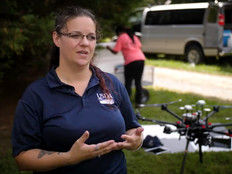Hardware
Army Ramps Up Augmented Reality Training with COTS-Inspired Gear
While live practice will remain a core element of U.S. Army training, soldiers are beginning to use augmented reality-equipped gear for more frequent and less expensive training. Special goggles let soldiers practice wherever they’re located while still seeing the environment to which they could be deployed. After-action reports are enhanced with 3D replays of the exercise. The Army has been testing the goggles since 2018, and plans to put them into use by the end of 2021.
If you enjoyed this video, check out the other videos in our Feds in the Field series:
- USDA Drones Search Irrigation Water for Contamination
- The Library of Congress Uses Modern Tech to Digitize American History
- In Space, Printing Happens in All Dimensions
- The VA Provides Health Care Via Smartphones
- Robotic Process Automation Does the Work at the Defense Logistics Agency
- Smart Building Technology Saves the State Department Time and Money
- Safe at Home: How 3 Agencies Made the Pivot to Remote Work
- Census Bureau Relied on Tech to Make the 2020 Count Happen
- National Park Service Relies on Webcams to Attract Far-Flung Nature Fans
- Drones Aid NOAA Scientists with Hurricane Tracking and Animal Monitoring
- Oak Ridge National Laboratory Prepares for Its Exascale Supercomputer
- NIST Aims a Camera at the Mechanics of Fire
Participants
Maj. Gen. Maria Gervais, Director, Synthetic Training Environment Cross Functional Team, Army Futures Command
Lt. Col. Carlos J. Kavetsky, Capability Developer, Synthetic Training Environment Cross Functional Team, Army Futures Command
Staff Sgt. Travis Hodge, 10th Mountain Division, U.S. Army, Fort Drum, N.Y.
Sgt. Loren Collins, 10th Mountain Division, U.S. Army, Fort Drum, N.Y.
Video Highlights
- Augmented reality goggles allow a soldier to train in a real-time environment with opponents that can react to what he is doing, enhancing the quality of the training.
- Training can take place at any location; the use of augmented reality cuts down on the time between repeats of exercises.
- The Army has been testing the equipment since 2018, and plans to have the equipment available to soldiers by the end of 2021.






